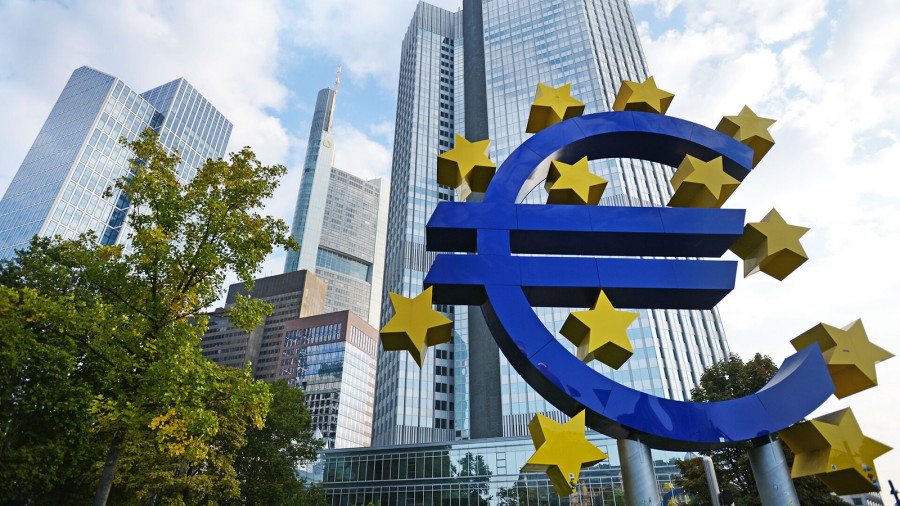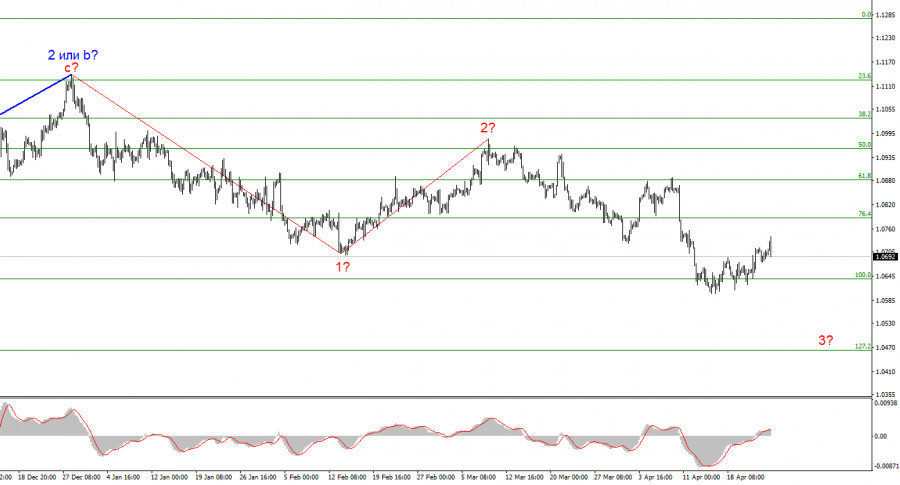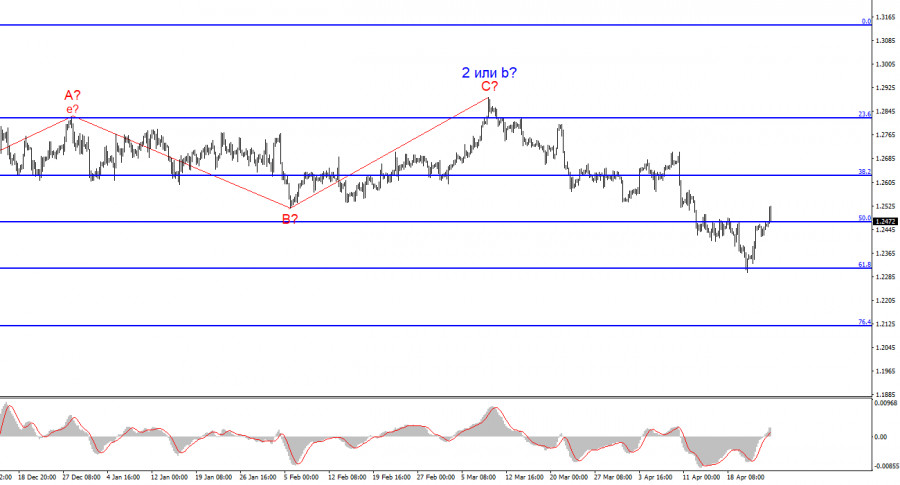
Demand for the euro has increased over the past few days, but I still believe we are dealing with a corrective wave within the larger Wave 3 or C. If this assumption is correct, the quotes will eventually decline under any circumstances, regardless of any news background. The market used the US GDP report to increase demand for the US currency. This is because the current corrective wave has taken on a convincing appearance, suggesting that the downtrend will resume.
The main reason for the euro's decline can be considered the looming easing of monetary policy in the Eurozone. The European Central Bank is about 80% certain of the timing of the first round of policy easing. This is likely to happen in June. Although market participants are also expecting the first rate cut in June, there are still certain circumstances that could prompt the central bank to postpone the first round to next month.
One of the ECB's policymakers, Isabel Schnabel, said that the services sector is a concern for the central bank. "We may face problems because of this sector. The more concerning part is productivity growth," she said. "We've had negative productivity growth now over several quarters."

I would also like to remind you that some of Schnabel's colleagues are urging the market not to rush with expectations regarding the easing of monetary policy. They believe that the current baseline scenario is one round of easing over two meetings. However, after the first round, the ECB intends to closely analyze incoming economic data. If the slowdown in inflation abates, the pauses between easing rounds may be longer than one meeting. Currently, the market expects three rounds of interest rate cuts in 2024. This is more than the expectations for rate cuts by the Federal Reserve.
I believe that the current news background still allows us to expect the formation of a downward Wave 3 or C, which is not yet clearly completed. The recent upward wave may have completed its formation already. Therefore, I expect the market to start increasing demand for the dollar again.
Wave analysis for EUR/USD:
Based on the conducted analysis of EUR/USD, I conclude that a bearish wave set is being formed. Waves 2 or b and 2 in 3 or c are complete, so in the near future, I expect an impulsive downward wave 3 in 3 or c to form with a significant decline in the instrument. I am considering short positions with targets near the 1.0463 mark, as the news background works in the dollar's favor. The sell signal we need near 1.0880 was formed (an attempt at a breakthrough failed).
Wave analysis for GBP/USD:
The wave pattern of the GBP/USD instrument suggests a decline. I am considering selling the instrument with targets below the 1.2039 level, because I believe that wave 3 or c has started to form. A successful attempt to break 1.2472, which corresponds to 50.0% Fibonacci, indicates that the market is ready to build a descending wave.
Key principles of my analysis:
Wave structures should be simple and understandable. Complex structures are difficult to work with, and they often bring changes.
If you are not confident about the market's movement, it would be better not to enter it.
We cannot guarantee the direction of movement. Don't forget about Stop Loss orders.
Wave analysis can be combined with other types of analysis and trading strategies.
The material has been provided by InstaForex Company - www.instaforex.comfrom Forex analysis review https://ift.tt/375CyeU
via IFTTT

